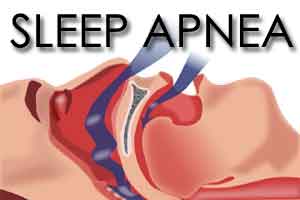- Home
- Editorial
- News
- Practice Guidelines
- Anesthesiology Guidelines
- Cancer Guidelines
- Cardiac Sciences Guidelines
- Critical Care Guidelines
- Dentistry Guidelines
- Dermatology Guidelines
- Diabetes and Endo Guidelines
- Diagnostics Guidelines
- ENT Guidelines
- Featured Practice Guidelines
- Gastroenterology Guidelines
- Geriatrics Guidelines
- Medicine Guidelines
- Nephrology Guidelines
- Neurosciences Guidelines
- Obs and Gynae Guidelines
- Ophthalmology Guidelines
- Orthopaedics Guidelines
- Paediatrics Guidelines
- Psychiatry Guidelines
- Pulmonology Guidelines
- Radiology Guidelines
- Surgery Guidelines
- Urology Guidelines
Now, an implant to ease sleep apnea

Sleeping through the night is difficult when your airway won't stay open, but now, a team of researchers has come up with an implantable device that can cut the symptoms of obstructive sleep apnea (OSA).
The University of Pennsylvania case study of the device implanted in the chest, called hypoglossal nerve stimulator (HGNS), offers promise for patients with moderate to severe OSA who cannot tolerate CPAP.
The device is a pacemaker with a tiny generator and a sensing lead, but instead of using electrical pulses to control abnormal heart rate, the device uses two wires to stimulate the tongue. Patients use a remote control to turn on the device before going to sleep and turn it off upon waking up. A delay allows the user to fall asleep before the pulse generator begins stimulation. After detecting the user's breathing pattern, the machine stimulates the hypoglossal nerve (the nerve that controls tongue motion) which enlarges the upper airway.
In the case study, 20 implants were completed between January 2015 and March 2016. All patients had information from a baseline polysomnography (PSG) recording prior to HGNS implant, as well as a post PSG approximately two months after HGNS, to assess the severity of their apnea and any change after treatment. Those who received the implant were typically overweight, middle aged, and had severe OSA.
Total apnea-hypopnea index (AHI), which measures severity of sleep apnea by counting the number of pauses in breathing during sleep, for all patients significantly decreased an average of 35 events per hour after the device was planted, which corresponds to an average reduction of 84 percent. Additionally, the lowest oxygen level measured in the blood during the night significantly increased by 11 percent, from 79 percent to 90 percent.
Lead author Richard Schwab said that considering that sleep apnea can lead to high blood pressure, heart attack, stroke and other serious health problems, it is critically important that we study devices that may serve as another option instead of CPAP to treat patients with sleep apnea.
Schwab noted that there is no perfect treatment option for obstructive sleep apnea, but our preliminary data suggest that hypoglossal nerve stimulation can effectively treat patients with sleep apnea who are unable to tolerate CPAP.

Disclaimer: This site is primarily intended for healthcare professionals. Any content/information on this website does not replace the advice of medical and/or health professionals and should not be construed as medical/diagnostic advice/endorsement or prescription. Use of this site is subject to our terms of use, privacy policy, advertisement policy. © 2020 Minerva Medical Treatment Pvt Ltd